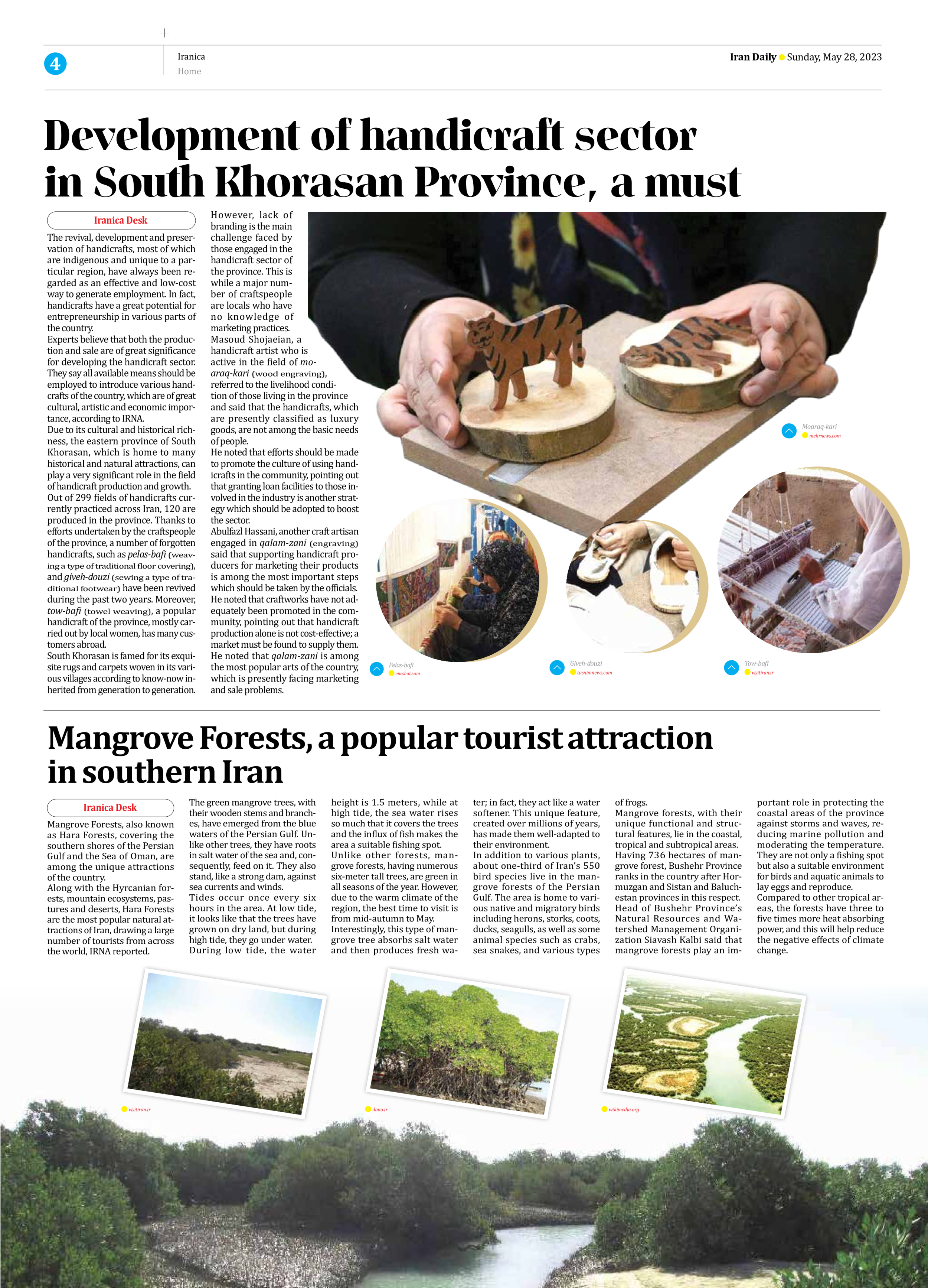
Mangrove Forests, a popular tourist attraction in southern Iran
Mangrove Forests, also known as Hara Forests, covering the southern shores of the Persian Gulf and the Sea of Oman, are among the unique attractions of the country.
Along with the Hyrcanian forests, mountain ecosystems, pastures and deserts, Hara Forests are the most popular natural attractions of Iran, drawing a large number of tourists from across the world, IRNA reported.
The green mangrove trees, with their wooden stems and branches, have emerged from the blue waters of the Persian Gulf. Unlike other trees, they have roots in salt water of the sea and, consequently, feed on it. They also stand, like a strong dam, against sea currents and winds.
Tides occur once every six hours in the area. At low tide, it looks like that the trees have grown on dry land, but during high tide, they go under water.
During low tide, the water height is 1.5 meters, while at high tide, the sea water rises so much that it covers the trees and the influx of fish makes the area a suitable fishing spot.
Unlike other forests, mangrove forests, having numerous six-meter tall trees, are green in all seasons of the year. However, due to the warm climate of the region, the best time to visit is from mid-autumn to May.
Interestingly, this type of mangrove tree absorbs salt water and then produces fresh water; in fact, they act like a water softener. This unique feature, created over millions of years, has made them well-adapted to their environment.
In addition to various plants, about one-third of Iran’s 550 bird species live in the mangrove forests of the Persian Gulf. The area is home to various native and migratory birds including herons, storks, coots, ducks, seagulls, as well as some animal species such as crabs, sea snakes, and various types of frogs.
Mangrove forests, with their unique functional and structural features, lie in the coastal, tropical and subtropical areas.
Having 736 hectares of mangrove forest, Bushehr Province ranks in the country after Hormuzgan and Sistan and Baluchestan provinces in this respect.
Head of Bushehr Province’s Natural Resources and Watershed Management Organization Siavash Kalbi said that mangrove forests play an important role in protecting the coastal areas of the province against storms and waves, reducing marine pollution and moderating the temperature. They are not only a fishing spot but also a suitable environment for birds and aquatic animals to lay eggs and reproduce.
Compared to other tropical areas, the forests have three to five times more heat absorbing power, and this will help reduce the negative effects of climate change.







